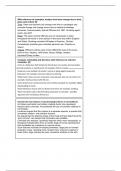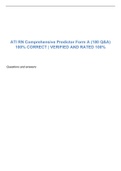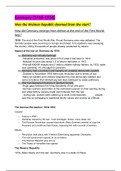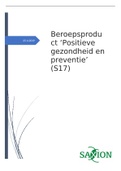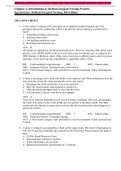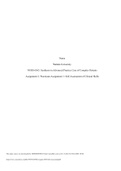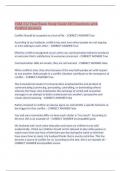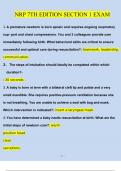Exam (elaborations)
Unit 2 criminological theories-all questions and answers for the written exam
- Module
- Criminological Theories
- Institution
- WJEC
Questions and answers for the written exam during year 1 of WJEC level 3 Applied Diploma in criminology (the same for certificate in criminology). Unit 2:criminological theories including LO1, LO2, LO3, LO4 from AC1.1 to AC3.2.
[Show more]
